
Transforming your garden into a vibrant haven is easier than you think! With the right garden layout ideas, your outdoor space can become a beautiful extension of your home, adding charm and character.
From cozy corner nooks to sprawling vegetable patches, there’s a garden design for everyone, regardless of space or budget. Whether you’re looking to host summer barbecues or simply enjoy a quiet morning coffee surrounded by nature, the perfect layout can set the scene for all your outdoor activities. Let’s uncover 13 stunning garden layout ideas that will inspire you to roll up your sleeves and get planting!
1. The Classic Flower Bed
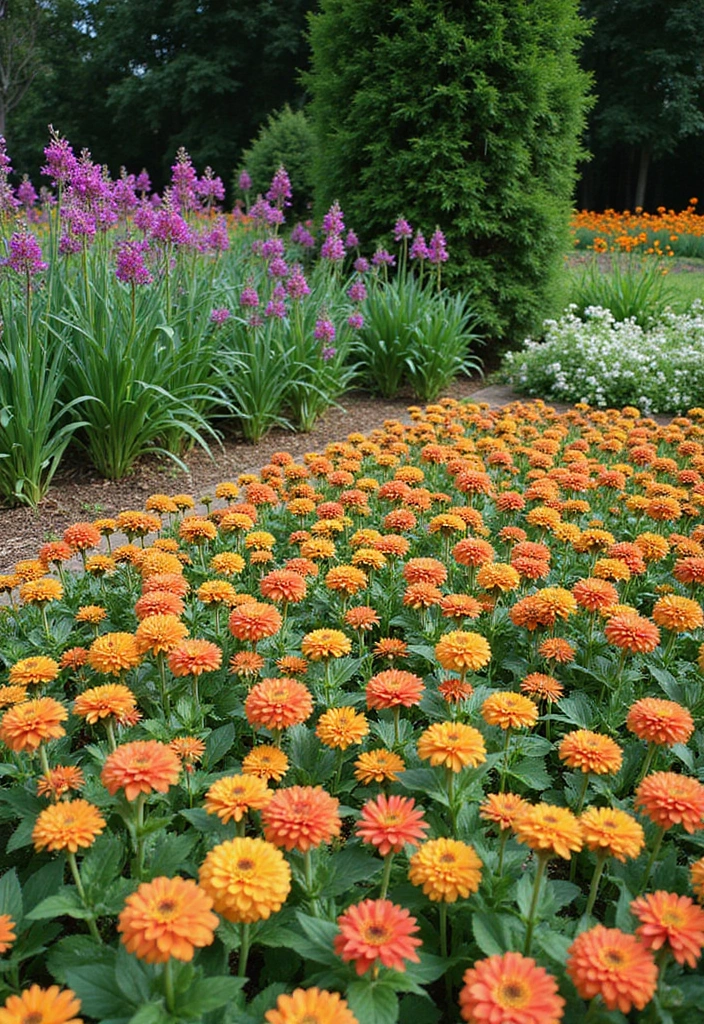
Nothing can beat the charm of a classic flower bed! Imagine colorful blooms bursting with life, creating a stunning focal point in your garden.
A traditional flower bed can be designed in a rectangular or circular shape, giving you plenty of options to play with. Consider planting a mix of perennials and annuals to enjoy blooms from spring through fall. To elevate the appeal, incorporate some taller plants at the back and shorter ones in the front for a tiered effect.
Here are some tips to design your flower bed:
– Choose a mix of plant heights for visual interest.
– Consider color schemes that compliment your home.
– Use mulch to suppress weeds and retain moisture.
– Don’t forget to include a few fragrant flowers to entice pollinators.
This timeless layout is not only visually pleasing but also supports local wildlife!
2. Edible Garden Design
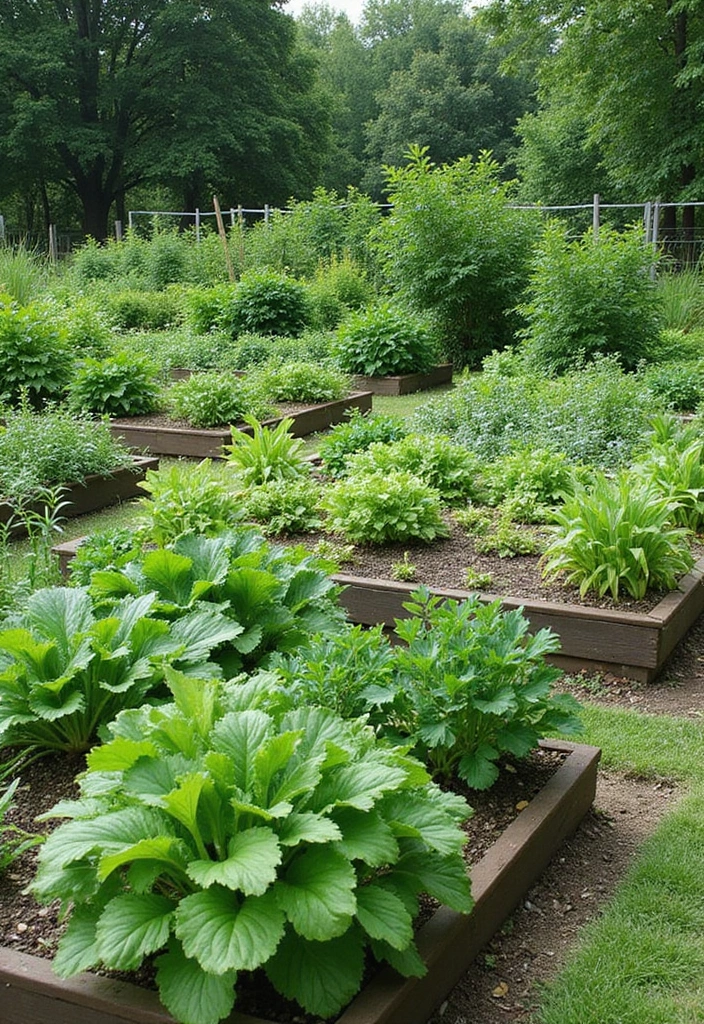
Who says gardens can’t be functional and beautiful? An edible garden is both practical and satisfying, letting you enjoy fresh vegetables right from your backyard!
To create an edible garden, consider raised beds or vertical gardening to maximize space. These designs not only help with better drainage but also keep the garden looking neat and tidy. Incorporating herbs, vegetables, and even fruit trees can turn your garden into a food paradise.
Thoughts on planning your edible garden:
– Start with easy-to-grow veggies like tomatoes, peppers, and herbs.
– Use companion planting strategies to deter pests naturally.
– Consider spacing to avoid overcrowding and allow sun exposure.
– Make sure to have a dedicated area for composting kitchen scraps!
An edible garden is not just a feast for the eyes—it’s a feast for the stomach too!
3. Zen Garden Serenity
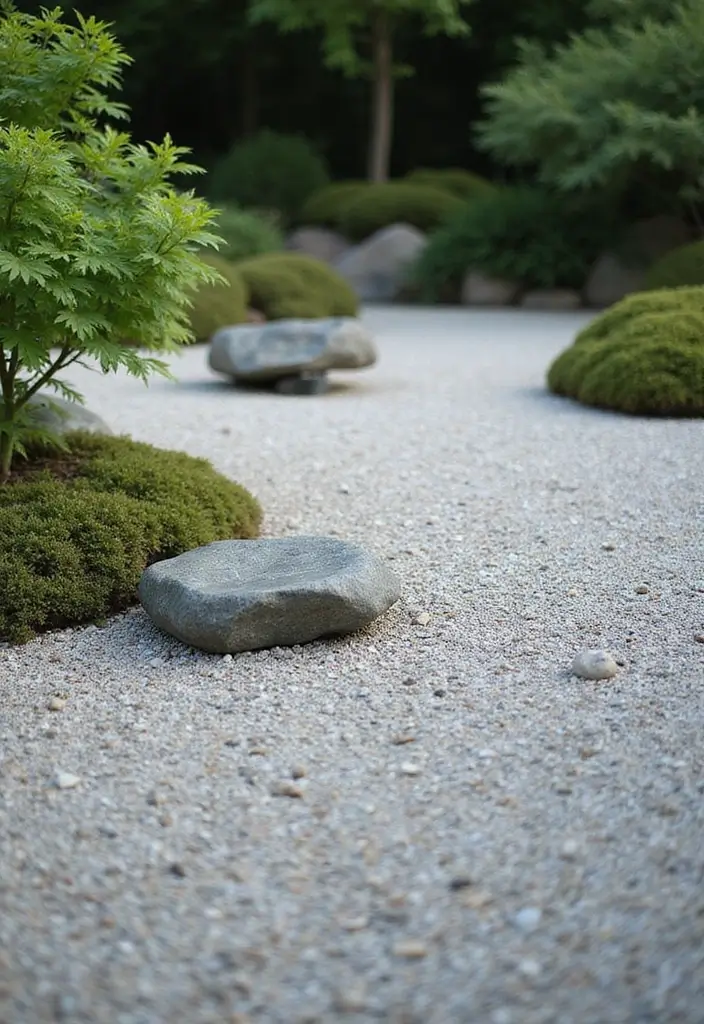
If tranquility is what you’re after, a Zen garden might be your dream escape. These gardens emphasize natural elements, using stones, gravel, and minimalistic plants to create a peaceful atmosphere.
A Zen garden invites meditation and reflection, with carefully placed rocks and raked gravel patterns enhancing the serene environment. Incorporating Japanese maples or bamboo adds an authentic touch.
Here are some ideas to create your Zen retreat:
– Use white gravel or sand for a clean, simple base.
– Arrange rocks in odd numbers for a natural feel.
– Include a bench or a small water feature for added calm.
– Keep plants sparse and strategic to maintain the minimalist aesthetic.
Designing a Zen garden can be a rewarding way to add serenity to your home.
4. Cottage Garden Charm
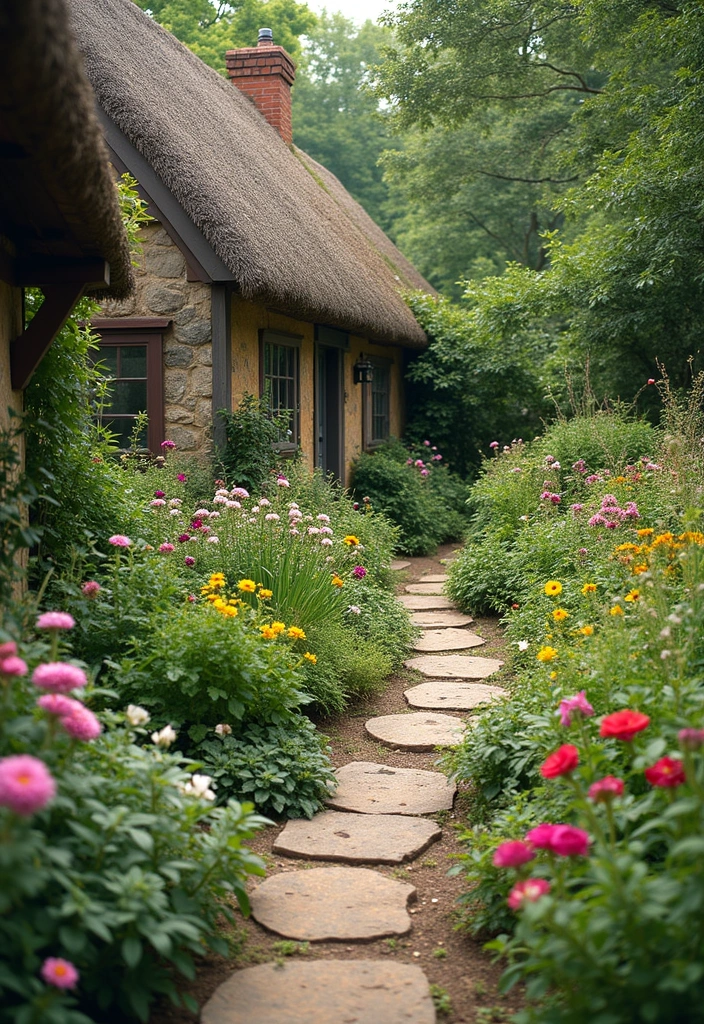
Step into the storybook beauty of a cottage garden! This whimsical style mixes flowers, herbs, and vegetables in a delightful jumble that feels both casual and serene.
Cottage gardens are often packed with various plants, creating a lush, overflowing look that exudes charm. Think of colorful perennials, climbing roses, and fragrant herbs all intertwined. To foster that enchanting vibe, use winding pathways and rustic furniture.
for creating a cottage garden:
– Incorporate a variety of colors and textures for a bountiful appearance.
– Use recycled materials for fencing and paths for that rustic touch.
– Choose plants that bloom at different times to ensure year-round beauty.
– Add whimsical decor like birdhouses or garden gnomes for character!
Your garden will become an idyllic retreat that feels like a fairytale come to life.
5. Vertical Garden Wonderland
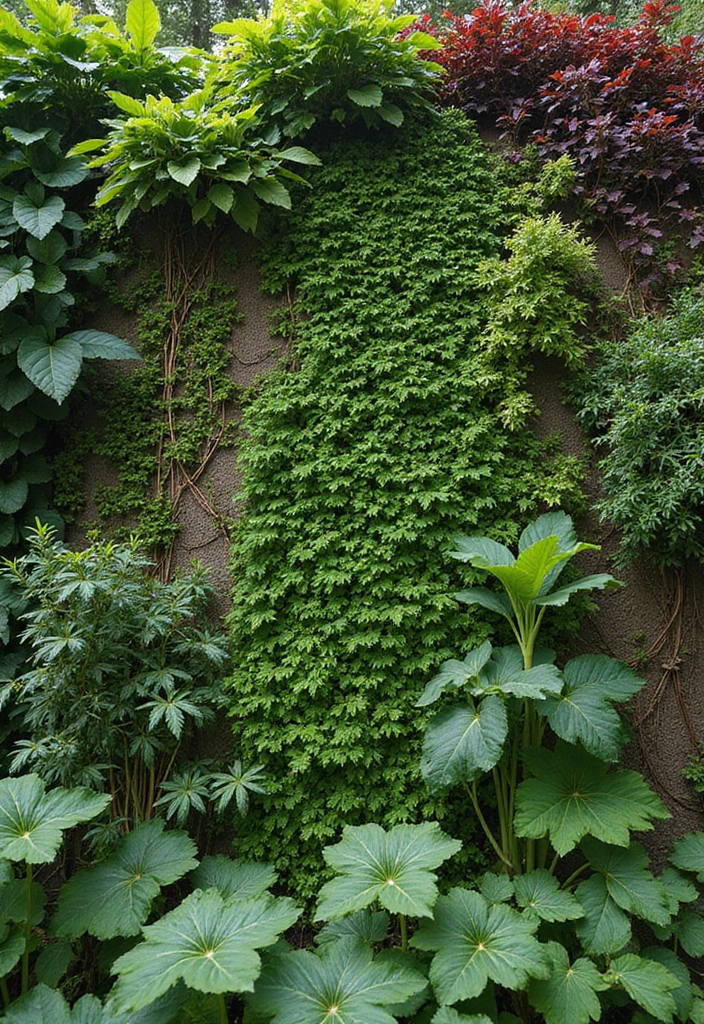
If you’re working with limited space, vertical gardens are a clever solution that can transform even the tiniest areas into lush green spaces. These gardens utilize walls, fences, and specially designed planters to grow plants upwards instead of outwards.
This layout is not only space-efficient but also adds a dramatic effect to your garden. You can mix herbs, flowers, and even vegetables in your vertical garden, providing both beauty and functionality.
Here are ways to create your vertical masterpiece:
– Use wall-mounted planters or trellises for climbing plants.
– Invest in pocket planters for a fun, layered effect.
– Choose plants that thrive in vertical conditions, like strawberries or succulents.
– Don’t forget to regularly water and maintain your vertical garden to keep it thriving!
Vertical gardens can be a stunning focal point that showcases your creativity while maximizing your garden’s potential!
6. Modern Minimalist Layout

For those who prefer clean lines and simplicity, a modern minimalist garden can be the perfect choice! This design focuses on fewer elements, allowing each plant and feature to stand out beautifully.
Utilizing geometric shapes and a limited color palette, a minimalist garden uses space efficiently while appearing elegant. Incorporate contemporary materials like concrete, glass, and metal for a sleek look.
Consider these ideas for your modern minimalist garden:
– Choose a monochromatic scheme with a few pops of color.
– Incorporate sculptural plants like succulents or ornamental grasses.
– Use symmetrical patterns for pathways and seating.
– Keep decorations to a minimum to enhance the clean aesthetic.
This style offers a sophisticated and peaceful environment, ideal for relaxation or entertaining guests.
Simplicity is the ultimate sophistication. In a modern minimalist garden, each plant tells a story, and every space breathes elegance. Embrace clean lines and let your green space shine!
7. Wildlife-Friendly Garden

Transforming your garden into a sanctuary for local wildlife is not only beneficial for nature but can also enhance your garden’s beauty. By creating a wildlife-friendly garden, you can attract birds, butterflies, and beneficial insects.
Incorporate native plants that provide food and shelter for local wildlife. Adding features like bird baths, bee hotels, and native flowers can turn your garden into a buzzing ecosystem.
Here are tips to make your garden wildlife-friendly:
– Plant a variety of natives that bloom at different times.
– Avoid using pesticides that can harm beneficial insects.
– Include water sources like ponds or birdbaths.
– Create shelter areas with brush piles or shrubs.
A wildlife garden not only helps the environment but can add life and movement to your space, creating a dynamic outdoor experience.
8. Artistic Garden Paths
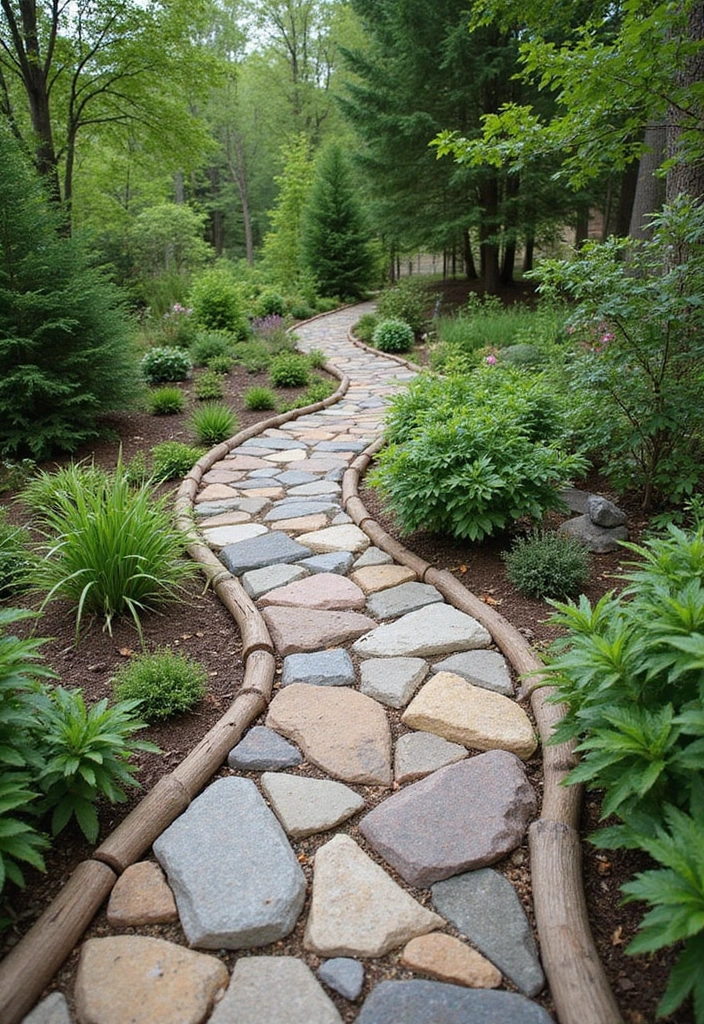
Paths can define a garden’s layout while adding charm and character. Artistic garden paths create visual interest and guide visitors through your outdoor oasis.
Consider using different materials such as stone, gravel, or wood for a unique look. Curved pathways can make your garden feel inviting and encourage exploration, while straight paths offer a more structured feel.
To design your artistic paths:
– Use contrasting materials for interest, like smooth stones with rough-hewn wood.
– Incorporate surrounding plants to soften edges.
– Add lighting for evening ambiance along paths.
– Plant ground cover plants in gaps for a more integrated look.
Artistic paths make your garden feel cohesive and purposeful, offering both beauty and function.
9. Container Garden Magic
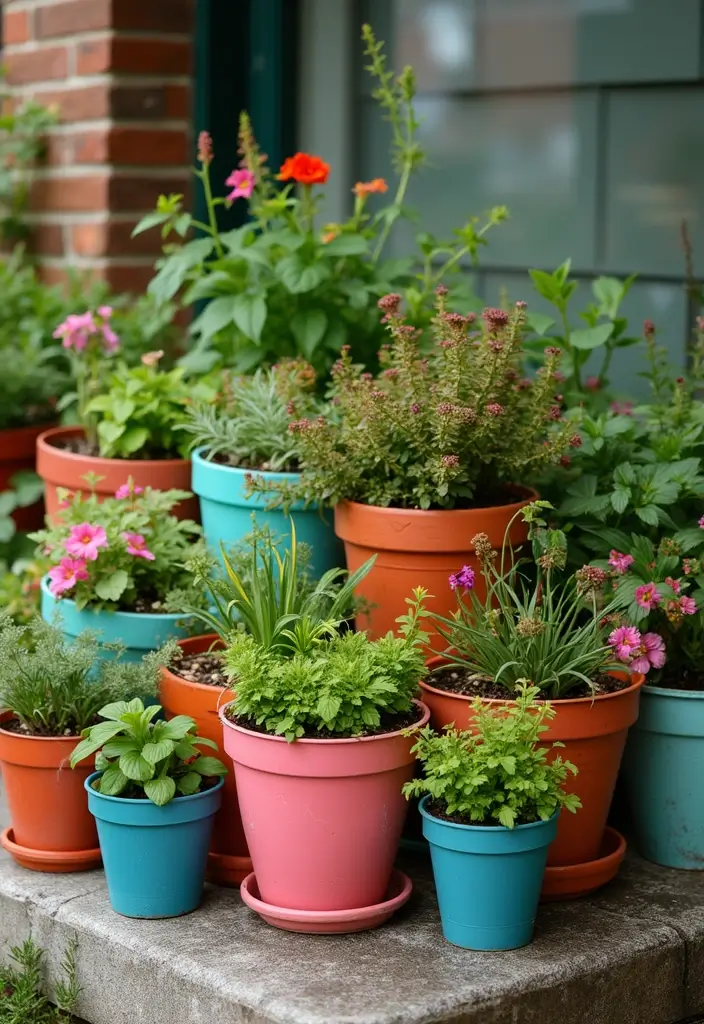
Container gardening opens up a world of possibilities, allowing you to grow plants even in the smallest spaces! This layout is especially perfect for patios, balconies, or small yards.
Using pots and containers gives you flexibility in arranging your plants, and you can mix and match to create stunning displays. Consider using various sizes, shapes, and colors to add layers and depth to your garden.
Key elements to consider for container gardening:
– Use high-quality potting soil for better plant health.
– Choose containers with drainage holes to prevent waterlogging.
– Incorporate a mix of plants for variety—think flowers, herbs, and even small veggies!
– Regularly rotate containers to keep your garden fresh and engaging.
Container gardening allows you to express creativity while ensuring that every inch of space is utilized beautifully.
A container garden is your ticket to creativity! 🎨 Mix sizes, shapes, and colors to turn any small space into a vibrant oasis. Let your imagination bloom with stunning arrangements!
10. Themed Gardens
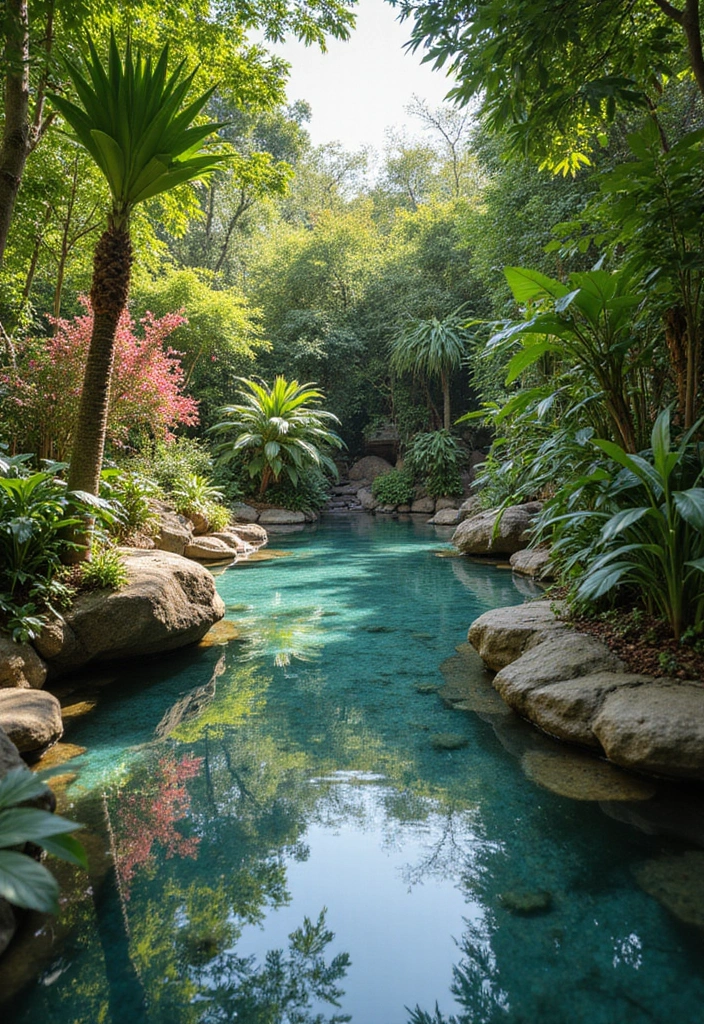
Themed gardens are an exciting way to make a distinct statement while reflecting your personal style. Whether inspired by a color scheme, a type of plant, or even a hobby, themed gardens provide endless creative opportunities.
Popular themes include Japanese gardens, tropical paradises, and even fairy gardens. Think about what resonates with you and your lifestyle. You can design a space that captures the essence of your theme.
Ideas for creating themes in your garden:
– Choose a consistent color palette to unify your plants.
– Incorporate structures or decor that reflect your theme, like trellises or sculptures.
– Use plants that are native to or evoke your theme’s environment.
– Don’t hesitate to include fun elements, like signs or miniature figurines.
A themed garden can tell a story and provide a unique experience for you and your guests.
11. Pergola Oasis
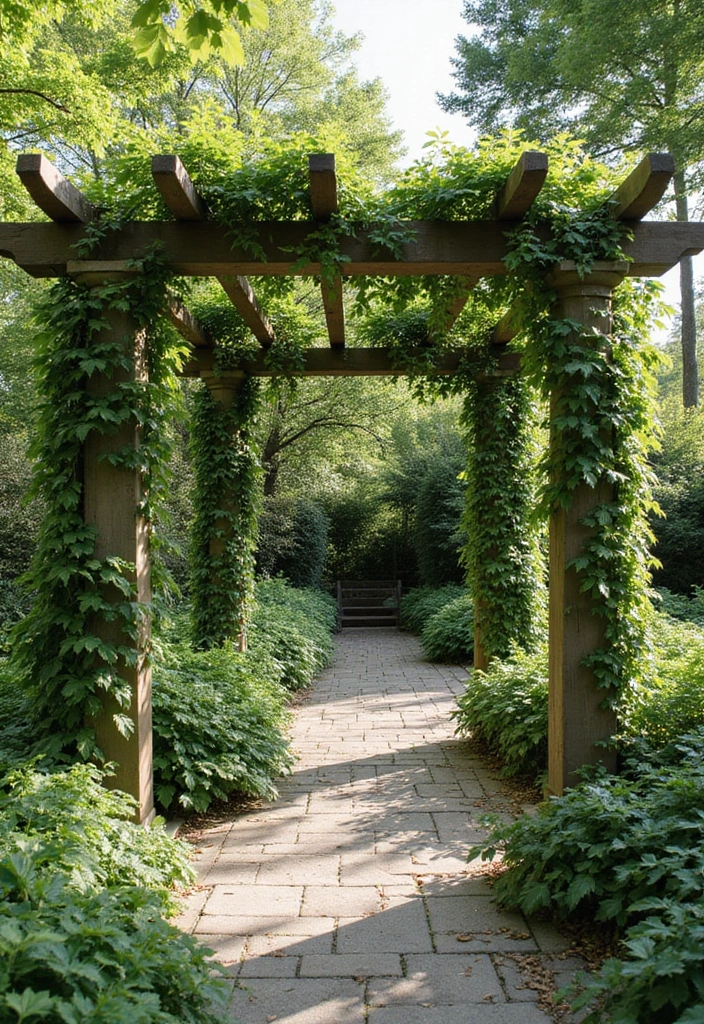
Adding a pergola can elevate your garden layout by creating a stylish focal point and providing shade. These structures invite you to sit back and relax, creating a cozy nook amidst the greenery.
You can drape climbing plants like wisteria or vines over a pergola, creating a natural canopy, or leave it open for a more modern feel. This versatile feature can also be a great space for outdoor dining or entertaining.
Consider these tips when designing your pergola:
– Choose a style that matches your home’s architecture.
– Include seating or a dining area underneath to enhance usability.
– Add outdoor lights for ambiance during evening gatherings.
– Incorporate planters or hanging pots for added greenery.
A pergola transforms your garden into an outdoor room, perfect for enjoying the beauty of nature.
Transform your garden layout into a serene sanctuary! A pergola not only adds style but creates the perfect cozy nook for relaxation and outdoor dining. Embrace nature’s charm under a leafy canopy!
12. Rustic Farmhouse Vibe
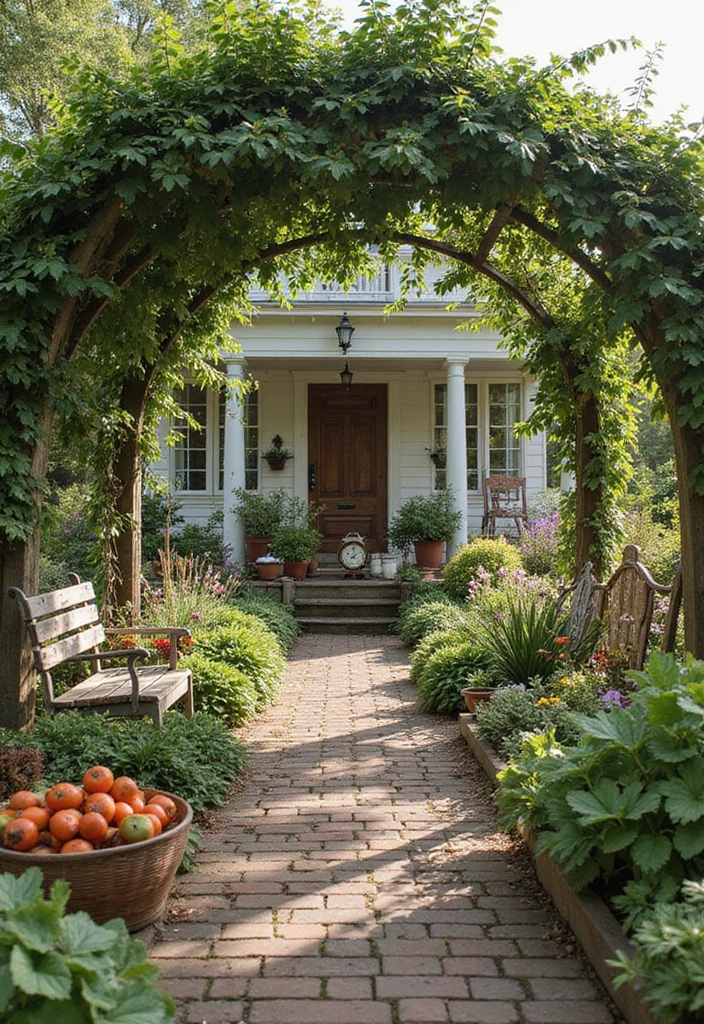
For a warm and inviting feel, a rustic farmhouse garden can bring comfort to your outdoor space. This layout often features natural materials and a mix of flowers, herbs, and vegetables, creating a relaxed atmosphere.
Using wooden fences, reclaimed materials, and vintage decor enhances that farmhouse charm. Incorporate colorful blooms alongside edible plants to create a bountiful look.
for achieving this vibe:
– Add wooden planters or barrels for planting.
– Use a patchwork of flowers to create a wildflower effect.
– Incorporate cozy seating areas with blankets for a welcoming touch.
– Use garden tools and decor for a touch of vintage flair.
A rustic farmhouse garden evokes nostalgia and warmth, allowing you to connect with the beauty of nature effortlessly.
13. The Relaxation Zone

Creating a dedicated relaxation zone in your garden provides you with an escape right outside your door. This area can be styled for lounging, reading, or simply enjoying nature.
Consider including comfortable furniture like hammocks, lounge chairs, or outdoor sofas, surrounded by plants and greenery that create a calming ambiance. Incorporating features like water fountains or soft lighting can enhance the tranquility of this space.
Here are ideas to design your relaxation zone:
– Use soft cushions and throws for comfort.
– Incorporate fragrant plants like lavender or jasmine for soothing scents.
– Create shade with trees, umbrellas, or shade sails.
– Position the space for optimal views of your garden.
Your relaxation zone can be your personal sanctuary, a perfect retreat from the hustle and bustle of daily life.
Transform your garden into a personal retreat! A cozy relaxation zone surrounded by lush greenery can turn ordinary moments into blissful escapes. Take a deep breath and let nature rejuvenate your spirit!
Conclusion
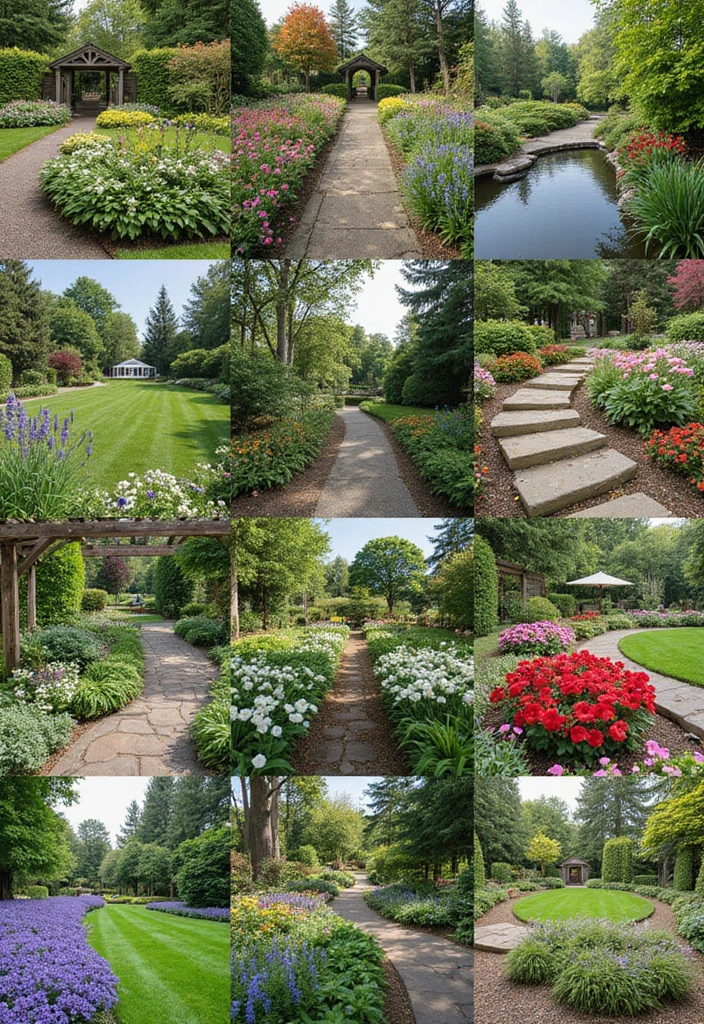
There you have it—13 garden layout ideas that can transform your green space into a stunning sanctuary! Whether you gravitate towards classic designs, modern minimalism, or whimsical cottage charm, there’s something for every gardener to love.
With a little planning and creativity, your garden can thrive and reflect your personality while bringing joy to your home. Go ahead, start dreaming up your perfect garden layout today!
Frequently Asked Questions
What are the best garden layout ideas for small spaces?
If you’re working with limited space, consider layouts like a vertical garden or a container garden. Both options maximize your growing area while adding beauty and greenery to your home. Vertical gardens utilize walls or fences, while container gardens allow you to arrange pots creatively on patios or balconies, making the most of every inch!
How can I create a garden layout that attracts wildlife?
To make your garden a haven for local wildlife, incorporate native plants, water features, and shelter options like birdhouses or bug hotels. A wildlife-friendly garden not only enhances biodiversity but also creates a vibrant ecosystem right outside your door. By providing food and habitat, you’ll attract birds, butterflies, and beneficial insects, enriching your green space!
What elements should I include in a relaxation zone in my garden?
Creating a dedicated relaxation zone in your garden can be incredibly rewarding. Include comfortable seating such as benches or lounge chairs, and consider adding shade structures like pergolas. Incorporating soothing features like a water fountain or wind chimes can enhance the calming atmosphere, making it the perfect spot for unwinding after a long day.
How do themed gardens differ from traditional layouts?
Themed gardens allow you to express your personality and creativity, setting them apart from traditional layouts. They can be inspired by specific color schemes, plant types, or even hobbies! Whether you envision a cottage garden filled with whimsical blooms or a modern minimalist space, themed gardens can tell a unique story and make your outdoor area truly one-of-a-kind.
What are some tips for planning an edible garden design?
When planning an edible garden, start by selecting a sunny spot in your yard. Decide on the vegetables and herbs you love, and consider companion planting to maximize space and yield. Raised beds or containers can improve drainage and soil quality, while using organic fertilizers can help your plants thrive. With careful planning, you can enjoy fresh produce right from your garden!
